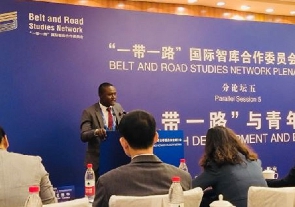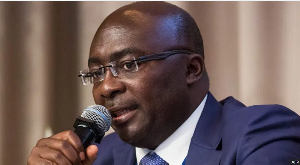Executive Director of the Africa-China Centre for Policy & Advisory (ACCPA), Paul Frimpong, has said Africa’s vision of building an integrated continent based on investment in world-class infrastructure and on the ideals of Pan-Africanism resonates positively with China’s Belt and Road Initiative (BRI).
He made these remarks in Beijing while delivering a speech at the Belt and Road Studies Network Plenary Meeting as part of a global think tank of scholars.
This is a thematic forum that forms part of the 3rd Belt and Road Forum for International Cooperation held in Beijing, China’s capital.
This year marks the 10th anniversary of the BRI, and the forum attracted over 4000 delegates from over 140 countries worldwide.
Launched in 2013 by President Xi Jinping, China’s Belt and Road Initiative (BRI) is one of the most ambitious infrastructure projects ever conceived in the history of our world.
According to Paul Frimpong, “As Africans, one of our key aspirations has always been about bridging the connectivity gap between member countries. This is a matter of urgency as Africa requires massive investment in critical and world-class infrastructure such as rails, roads, ICT, etc.”
“This is a vision captured in the Agenda 2063 of the African Union as a continental commitment to connecting Africa’s economies.”
“I strongly believe that the Belt and Road Initiative’s objective of global connectivity, putting infrastructure development at the center, tells the story and aspirations of Africans.".
As of August 2022, 50 of the 55 countries in Africa had signed some sort of memorandum of understanding or other agreement on the BRI.
He further challenged the African government and pan-African institutions of policy significance to leverage the BRI opportunities to bridge the continent’s infrastructure gap in order for the continent to realize its full economic potential.
“Investment in critical infrastructure has the potential to unlock the economic transformation of Africa that we so desire. China’s economic success story witnessed in the last 30 to 40 years is such a shining example,” he concluded.
Business News of Wednesday, 18 October 2023
Source: ACCPA
Africa’s vision of connectivity resonates well with China’s Belt and Road Initiative – Paul Frimpong
Entertainment
















